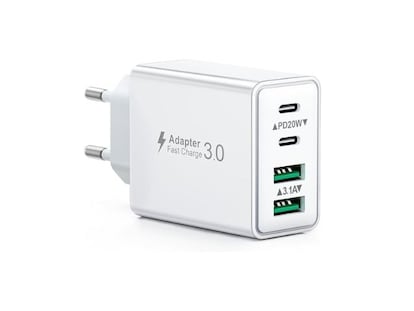Unravelling the technology of the first humans in Europe
Some men always seem to want the latest gadgets, from snazzy iPads to the most up-to-date DIY tools. Ancient man was no different, upgrading tools as soon as new innovations became available. The capacity to develop and use new tools was crucial in allowing ancient man to move from Africa to Europe and start evolving into the humans we are today.
My team at the Department of Prehistory and Archaeology at the Universidad Autónoma de Madrid in Spain has been collaborating in the excavation and study of remains of ancient man found in Dmanisi, Georgia (figs 1 and 2). This site is the richest in fossil remains from the lower Pleistocene period (around 1.8 to 1.6 million years ago) found so far, and to date has yielded five craniums and dozens of skeletal remains (fig 3). The remains are nearly two million years old, representing the oldest ever hominids found in Europe. The similarity of these hominids, named Homo georgicus, to Homo ergaster?a species found in Kenya, Africa, that dates to around 1.75 million years ago?suggest that Homo georgicus was the first species to leave Africa and may have given rise to the Asiatic Homo erectus line. As such, Homo georgicus could be the start point of modern European man: you and me.
Our team also found many stone tools at the Dmanisi site, the first stone tools documented in Eurasia. Our study of these tools has revealed the complex technical behaviour of the hominids who lived at this site: behaviour that allowed them to expand beyond eastern Africa. Furthermore, analysis of the sequence in which materials from this site were produced has shown the technological changes these groups of humans implemented on their arrival in Europe.
The stones used in the manufacture of these tools came from the surrounding area, as is usual during this period of antiquity. The hominids almost always chose smooth pebbles from the nearby Mashavera and Pinesauri rivers, although larger blocks and flat angular stones were also occasionally used. The inhabitants made use of a wide variety of rocks, up to 21 different types, indicating their ability to recognise and make use of any stone that could be shaped.
The stones chosen usually had a naturally smooth surface from which it was easy to detach the first chips. At the oldest levels (level IV), this was done by striking chips of stone from the same surface in simple stages until the edge of the pebble became blunt, at which time the pebble was either discarded or the same process was started on a different surface. The "flakes" produced were used for cutting and filleting animals, carving wood, digging, and so on. However, many of the pebbles chosen were not shaped and were no doubt used as hammers or anvils.
At level II (one of the later stages of occupation), stone chips were obtained alternately from one or another surface of the pebble, or "core." This gave more control over the shaping process and yielded more chips.
Study of the site has enabled scientists to place the Dmanisi stone tool industry halfway between what are considered pre-oldowan, or mode 0, industries (around 2.6 to 2 million years ago) and oldowan, or mode 1, industries (around 2.4 to 1.7 million years ago). Slightly more recent industries (1.4 to 0.8 million years ago) that continued to use oldowan technology have been found in western Europe. Good examples of this technology can be found at sites such as Monte Poggiolo (Italy), and in Orce and Atapuerca (Spain).
In spite of its simplicity, this technology allowed hominids to expand over a larger geographical area than had previously been possible, adapting to surroundings increasingly further removed and different from their starting point in south and southeast Africa. Dmanisi represents an important milestone in the evolution of the lithic industry on the threshold of Eurasia, over which the first groups of hominids crossed.
Tu suscripción se está usando en otro dispositivo
¿Quieres añadir otro usuario a tu suscripción?
Si continúas leyendo en este dispositivo, no se podrá leer en el otro.
FlechaTu suscripción se está usando en otro dispositivo y solo puedes acceder a EL PAÍS desde un dispositivo a la vez.
Si quieres compartir tu cuenta, cambia tu suscripción a la modalidad Premium, así podrás añadir otro usuario. Cada uno accederá con su propia cuenta de email, lo que os permitirá personalizar vuestra experiencia en EL PAÍS.
¿Tienes una suscripción de empresa? Accede aquí para contratar más cuentas.
En el caso de no saber quién está usando tu cuenta, te recomendamos cambiar tu contraseña aquí.
Si decides continuar compartiendo tu cuenta, este mensaje se mostrará en tu dispositivo y en el de la otra persona que está usando tu cuenta de forma indefinida, afectando a tu experiencia de lectura. Puedes consultar aquí los términos y condiciones de la suscripción digital.




























































